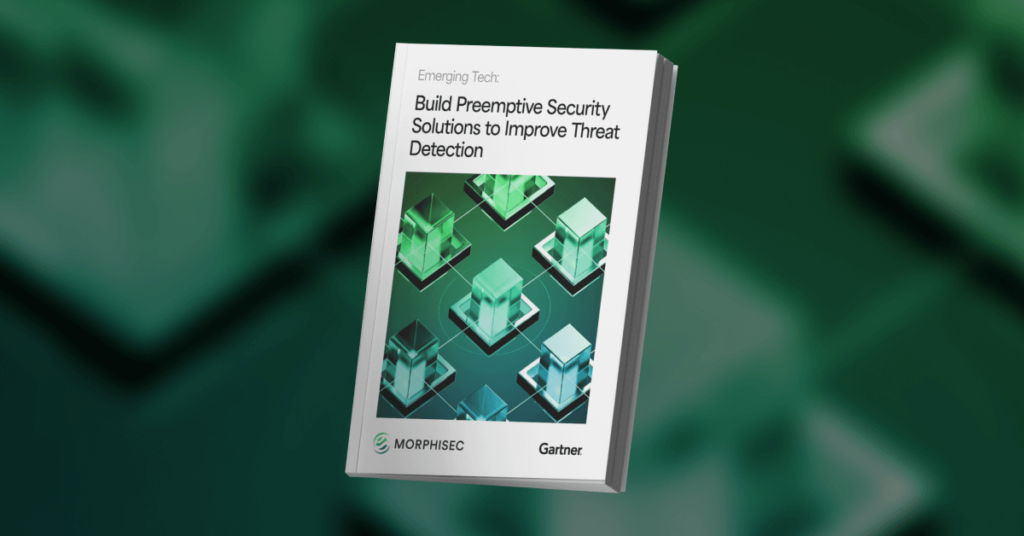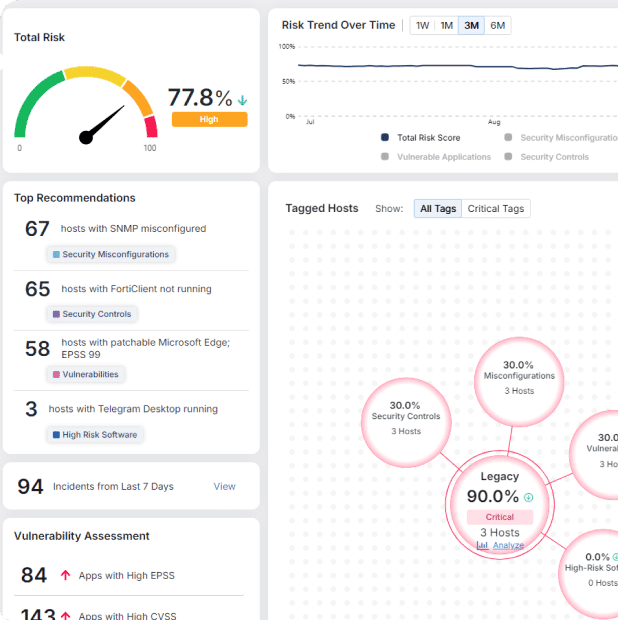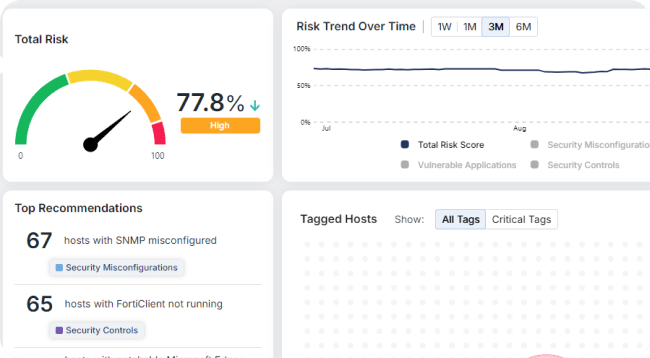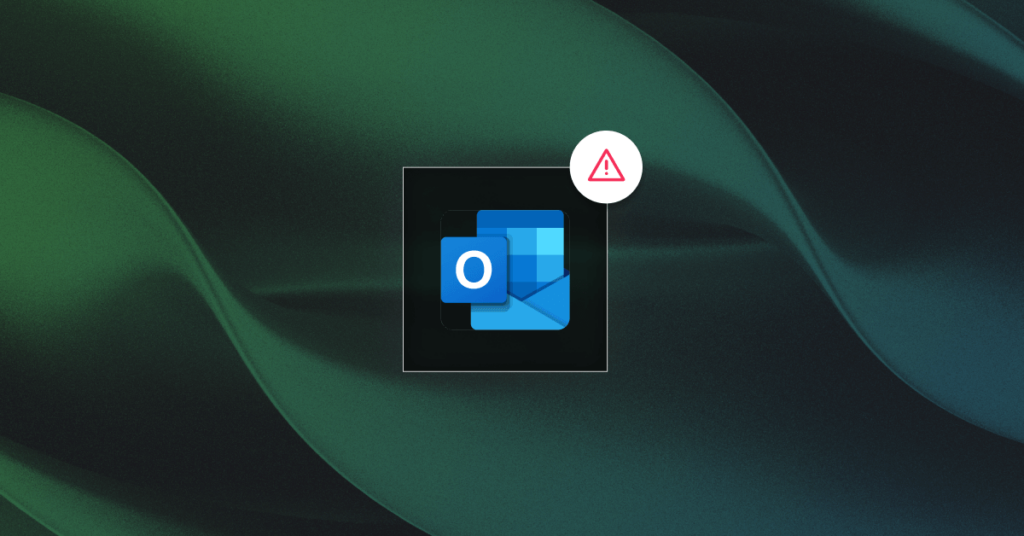2025 Prediction: Preemptive Cyber Defense Will Shake Up Cybersecurity Planning

The cybersecurity landscape continues to evolve at an unprecedented pace, with 2025 poised to bring even greater complexity and urgency to digital defense strategies. The rapid weaponization of AI technologies is transforming the threat environment, enabling attackers to launch sophisticated, adaptive, and highly targeted campaigns at scale.
For security leaders, this evolving landscape creates a constant state of flux, as they grapple with shifting recommendations, emerging technologies, and use case-specific requirements. The need to pivot strategies frequently to counter novel threats leaves many organizations struggling to maintain clarity, cohesion, and confidence in their cybersecurity approach.
Preemptive Cyber Defense Promises an Integrated Approach
For years, traditional cybersecurity strategies have centered on detection and response—finding and neutralizing threats once they’ve already infiltrated a system. While these capabilities are crucial, they’re increasingly being outpaced by sophisticated and evasive attack techniques, such as fileless or in-memory attacks. These advanced methods exploit system vulnerabilities without leaving a digital footprint, making them incredibly difficult for detection tools to identify and stop in time.
The reality is that detection and response alone can’t keep up with tomorrow’s complex attack techniques. To stay ahead, leaders need to break free from siloed approaches and rethink their reliance on reactive measures. A prevention-led strategy that proactively disrupts threats before they take hold is essential to outsmarting attackers and safeguarding today’s dynamic digital environments.
According to Gartner®: “Preemptive cyber defense is an emerging trend and related set of technologies that are focused on proactively deflecting and defending against cyber threats by identifying and mitigating likely attack vectors and related vulnerabilities and exposures before they can be exploited. Unlike traditional reactive methods (like detection and response) that wait for attackers to make the first move, preemptive cyber defense solutions focus on getting ahead of potential attackers and removing threat exposures.”1
Adopting preventative technologies that support preemptive cyber defense is a logical approach, but not an easy one for security leaders contending with legacy technology across their security stack, company processes that are slow to change and vendor confusion.
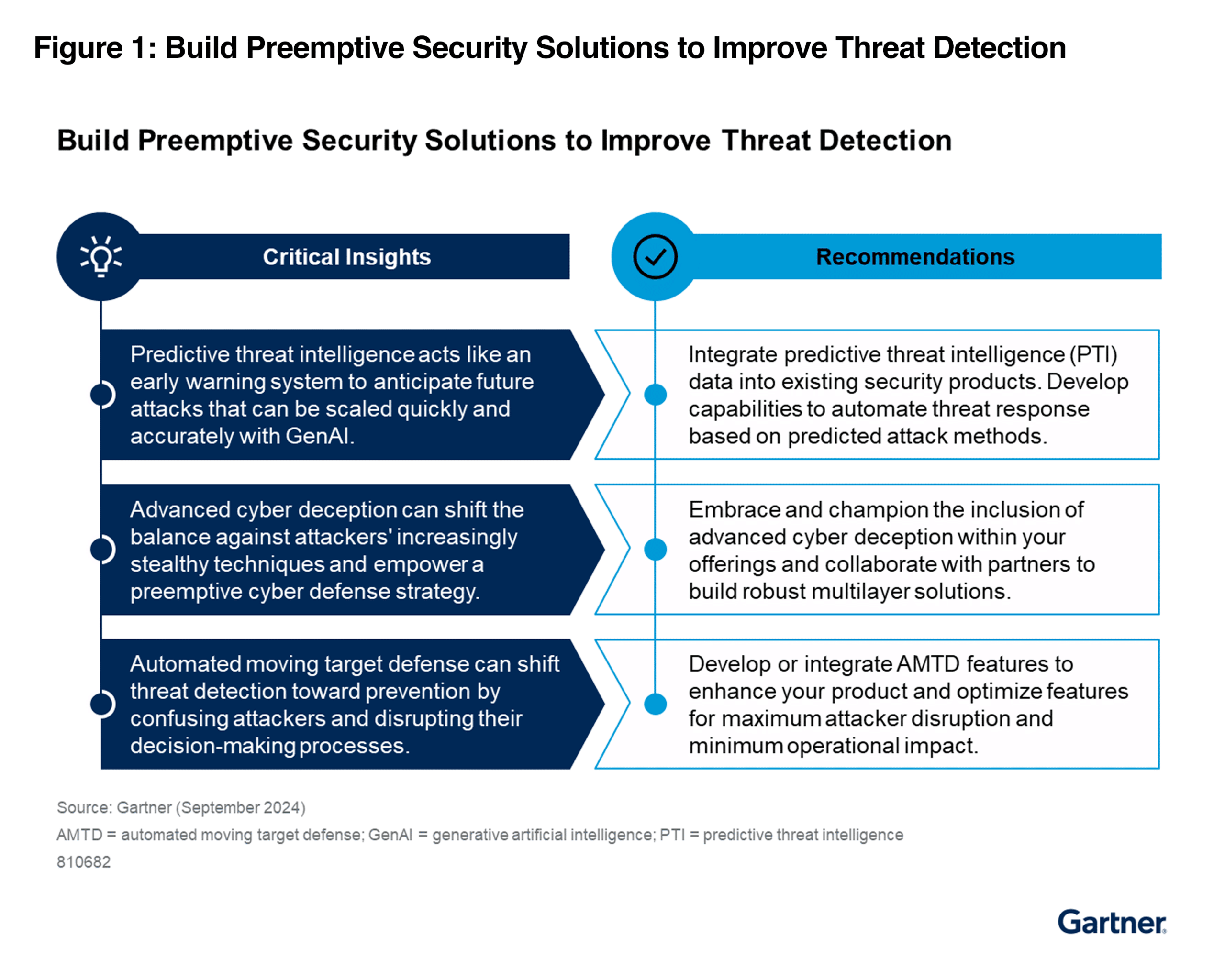
Modernizing the Security Stack
In today’s interconnected threat landscape, the effectiveness of your cybersecurity strategy hinges on how well your tools work together. Siloed, point solutions may address specific problems, but they often create gaps in visibility and coordination, leaving your organization vulnerable to sophisticated threats.
On the other hand, a unified security stack—where technologies are designed to communicate and collaborate—can provide a much stronger line of defense. By sharing data and insights across the stack, these integrated solutions enable faster detection, streamlined response, and more effective threat prevention. Adding preventative capabilities with technologies like Automated Moving Target Defense (AMTD) further strengthens your overall security posture with a last line of defense.
Gartner® suggests that: “Preemptive cyber defense solutions are typically designed to be integrated with existing detection and response technology solutions, rather than being used as separate, stand-alone solutions. Some use additional software-based agents, decoys and other sensors to add their own unique detection capabilities to continuously monitor and analyze activity within an environment and more rapidly identify any unusual, unexpected or potentially malicious activity.”1
{{cta(‘2b183160-ef94-4b88-9912-f90c274320d9’)}}
AMTD technology strengthens an organization’s defenses by constantly and automatically altering the attack surface. This dynamic approach makes it significantly more challenging for attackers to identify and exploit vulnerabilities.
Unlike traditional static defenses that rely on fixed system configurations and can become predictable over time, AMTD introduces continuous variability into the environment—shifting IP addresses, modifying network paths, or regularly changing system configurations. This unpredictability keeps attackers guessing, reducing their chances of success and enhancing overall security resilience.
Gartner® notes that: “PCD leverages AMTD architectures, zero-trust network access (ZTNA) solutions, and automated security scanning and testing tools to continuously identify, validate, prioritize and remediate any identified threat exposures before attackers can exploit them.”1
Morphisec’s pioneering AMTD technology offers operational efficiency with simple installation, negligible performance impact and no additional staffing requirements. It also works with an organization’s security stack, enriching the performance of endpoint security solutions and NGAV, versus competing with them.
Budgeting for Preemptive Cyber Defense in 2025
Achieving preemptive cyber defense means staying ahead with new technology investments. Yet, as a cybersecurity leader, you often face the dual challenge of operating within constrained budgets while justifying the need for these investments. It’s no longer enough to highlight the security benefits; you must also build a business case that demonstrates a clear return on investment (ROI).
This is where Annual Loss Expectancy (ALE)—a widely used actuarial tool in risk assessment—proves invaluable. ALE is increasingly being leveraged in cybersecurity to guide investment decisions and address concerns about potential technology overlap or redundancy. By calculating the financial impact of specific security risks over a given timeframe, ALE provides a quantitative, monetary estimate of the annual costs associated with potential incidents.
An enhanced ALE approach goes a step further, factoring in a business’s unique risk tolerance and profile. It quantifies risks by analyzing the cost of various scenarios, such as data breaches, and the likelihood of those risks materializing under current security measures. This makes ALE an essential tool for prioritizing investments and demonstrating how targeted solutions can mitigate risk, reduce costs, and align with organizational goals.
{{cta(‘438cd55b-17f2-4301-ae26-678f8ab7308d’)}} to learn how you can apply and map ALE for your business’s stakeholders.
Adopting a Preemptive Cyber Defense Strategy
Shifting your organization’s detection-based strategy to a preventative-based one won’t happen overnight, but there are steps you can take to start the transition in 2025.
Gartner® suggests that: “Years ago, budgets were allocated to detection and response rather than prevention because prevention controls were failing. We now need to shift back to preemptive cyber defense and upgrade to the latest generation of preemptive defense technologies.”1
{{cta(‘e3d0f801-4b26-43f1-9b12-7da7ceacd3ea’)}} for critical insights and recommendations that can help you better understand preemptive cyber defense and the technologies that support it.
{{cta(‘1f35892c-f639-4cf3-8392-89607e9fa694’)}}
1Gartner®, Emerging Tech: Top Challenges in Preemptive Cyber Defense, Lawrence Pingree, Isy Bangurah, Luis Castillo, Walker Black, 22 October 2024
GARTNER® is a registered trademark and service mark and Hype Cycle is a registered trademark of Gartner®, Inc. and/or its affiliates in the U.S. and internationally and is used herein with permission. All rights reserved.
Gartner® does not endorse any vendor, product or service depicted in its research publications, and does not advise technology users to select only those vendors with the highest ratings or other designation. Gartner® research publications consist of the opinions of Gartner®’s research organization and should not be construed as statements of fact. Gartner® disclaims all warranties, expressed or implied, with respect to this research, including any warranties of merchantability or fitness for a particular purpose.
Stay up-to-date
Get the latest resources, news, and threat research delivered to your inbox.








